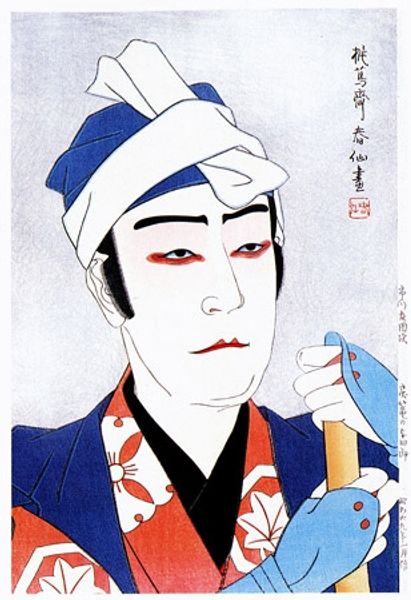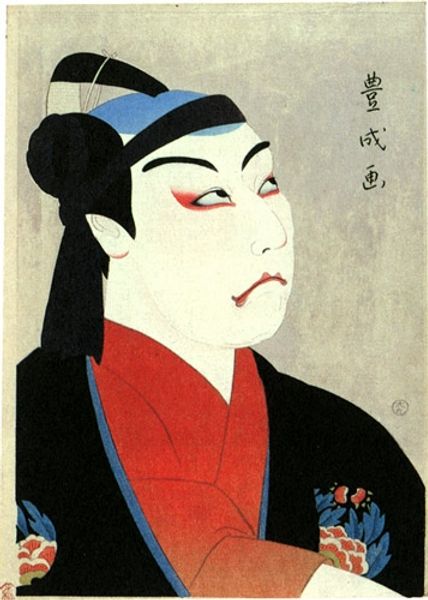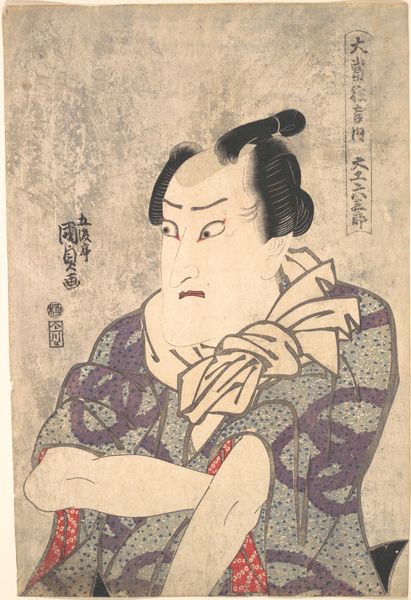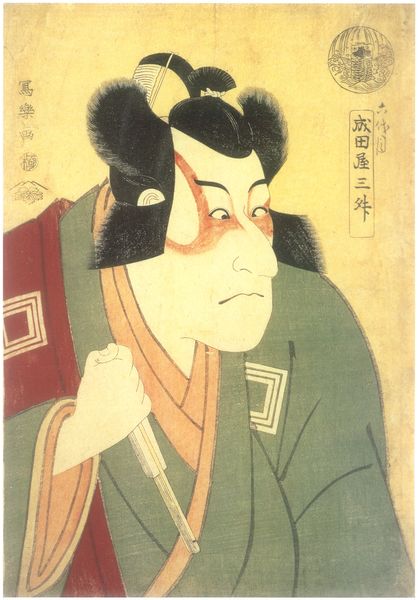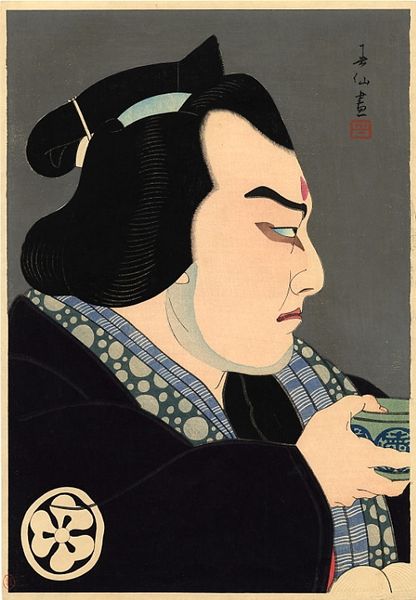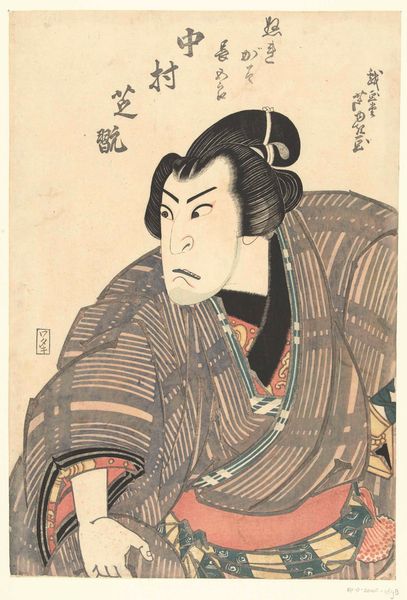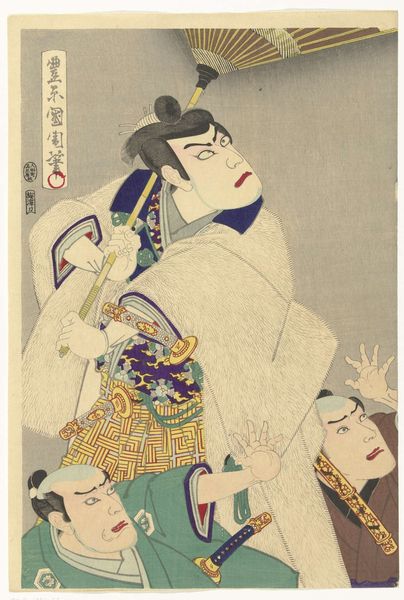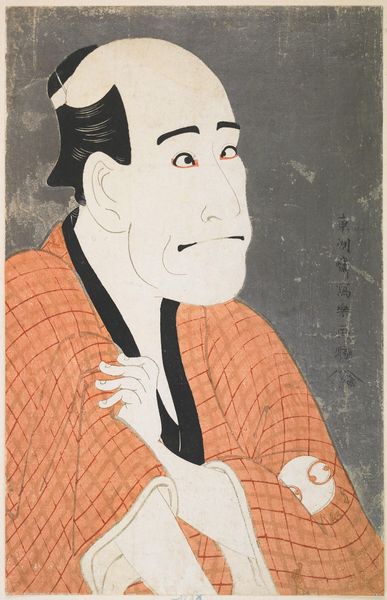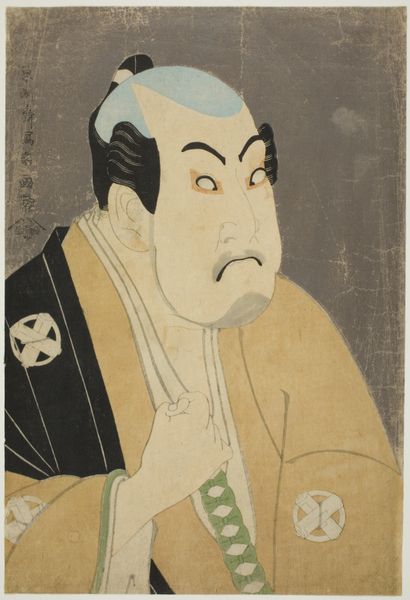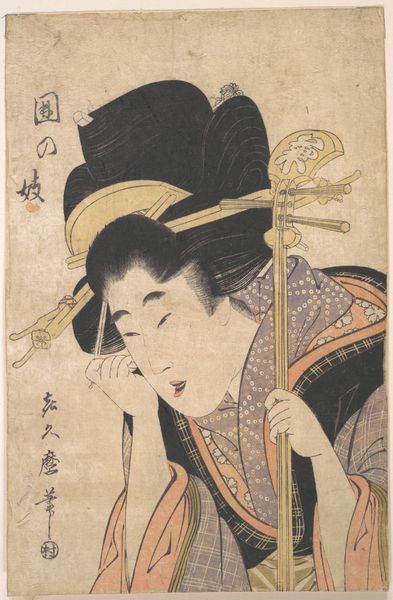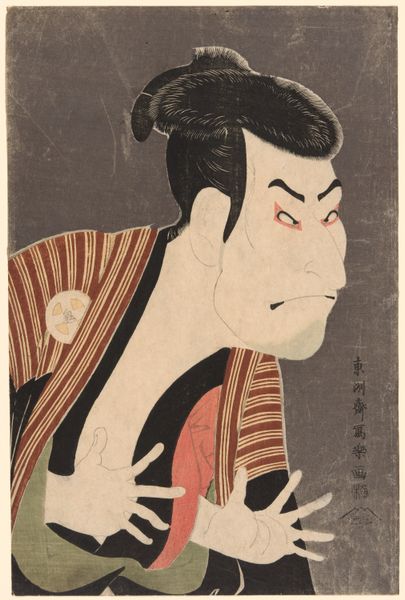
Copyright: Public domain
Curator: Yamamura Toyonari created this intriguing woodblock print in 1919. It depicts Matsumoto Koshiro VII in the role of Sekibei. Editor: The exaggerated features practically leap off the paper. Look at that almost grotesque intensity, captured so simply yet effectively. It really emphasizes the artifice of performance. Curator: Precisely. The composition relies heavily on line, which is crucial to ukiyo-e prints. Consider the bold outlines defining the figure's costume and facial features against that subdued background. And, the application of flat color amplifies the theatricality. Editor: I'm thinking about the process here, though. Those sharp lines suggest masterful carving—layers upon layers, block by block. We're seeing not only the artist's hand but also the skilled craftspeople dedicated to the labor of this kind of image production. Curator: Of course. But observe how the stark white face contrasts against the crimson accents, forcing our gaze toward the highly expressive eyes. This use of color isn’t merely decorative. It speaks to the essence of character portrayed. The formal organization intensifies the drama. Editor: Right, and that character is commodified, too. These prints weren't fine art in the Western sense; they were mass-produced for public consumption. A direct link to performers and, by extension, the culture of Kabuki available at your corner shop. Curator: Yes, this piece, as with so many portraits in the ukiyo-e tradition, captures not just likeness, but an idealized image intended for popular enjoyment. Editor: Ultimately, it showcases an intricate confluence of craft, commerce, and representation. And as an art object, this offers much insight into popular tastes of its day. Curator: It does provide an elegant demonstration of form and theatrical affect.
Comments
No comments
Be the first to comment and join the conversation on the ultimate creative platform.
